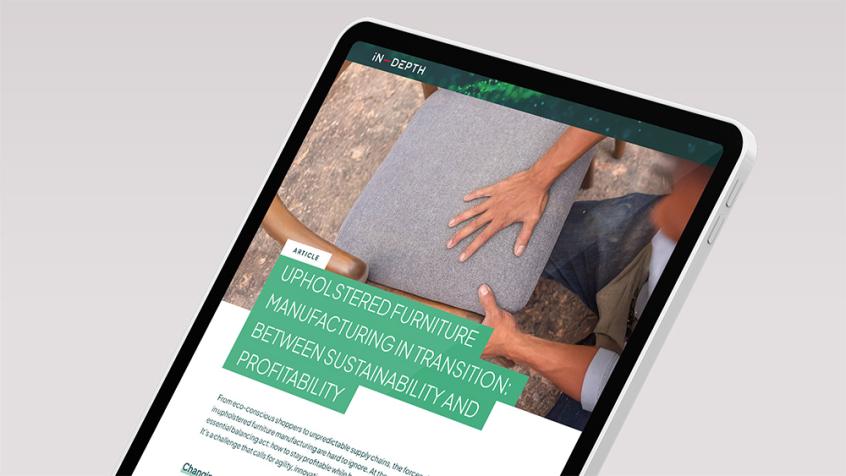From "Push" to "Pull": Why the pull system for manufacturing is the future of the furniture industry
Adopting the pull system for furniture production enables companies to embrace a more customer-centric production model while reducing waste.

Customization and sustainability: Drivers of a better way of manufacturing
The democratization of customization and demands for more sustainable products and manufacturing practices have made using the “push” manufacturing model less relevant to the modern market. While the push system does have its benefits, such as economies of scale, available stock, and the ability to plan, it is not adapted to the present or future of furniture manufacturing.
In a world where customers want to be co-creators and expect to have a say in how their creations are produced, a demand-driven, or “pull’ manufacturing model is way of the future. A pull model matches supply with demand, therefore generating zero waste and stock.
Push vs pull furniture manufacturing
‘Push’ manufacturing is the model that is often adopted by the fast furniture sector. With this model, furniture is produced based on demand forecasts, which are not always accurate. Companies end up with overstocked inventories of unsold products that are buried in landfills, due to sudden shifts in consumer tastes and preferences in favor of multi-functional furniture.
Furniture manufacturers can change the paradigm by reversing the order of their production process, which is to match demand with supply instead. By only producing after the customer has placed the order, they will produce the exact quantity needed to meet demand, which helps reduce inventory levels, costs and in turn, waste.
What are the benefits of moving from push to pull?
Moving to a demand-based production also means moving away from the waste generated by ‘fast furniture’ and push production in general. According to the U.S. Environmental Protection Agency (EPA), more than 12 million tons of furniture waste are brought to landfills every year. Only producing a product after it is ordered eliminates guesswork around demand and, therefore, waste. It also avoids the pitfall of the “fast furniture” mindset, which sees furniture as a disposable good to be replaced as trends change.
On-demand production is less risky for furniture companies, as they are producing exactly what their customers want (no forecasts needed), in terms of quantity and quality. This means smaller inventories and fewer markdowns. Furniture companies are no longer gambling with their profit margins by predicting trends.
There are also workflow benefits with the pull system. In this process, each successive stage of production only begins when the previous stage is completed and the required materials or components are available. This results in improved process efficiency.
Two companies that have made the change
Jakobsen
Adopting a pull system provided a competitive advantage for Danish furniture brand, Jakobsen Home. Jakobsen recently implemented Furniture On Demand by Lectra, which enabled the company to create more pull systems in its production processes. Before using Furniture On Demand, operators cut pieces which were then put in a big pile and moved to the sewing room when they had time. Now, they are able to cut only what is needed for the next day’s sewing operations.
Ekornes
Ekornes, a Lectra customer for over 20 years, had used a batch production model for years but they wanted to experiment with a new production method. Long lead times were a major disadvantage to the batch production process. An experiment with one-piece flow yielded significant, positive results. Production lead-time was halved and final assembly lead-time was reduced by 94%. There was also a reduction in buffer stock from 1.5 days to 0.5 days between sawing and final assembly.
How Furniture On Demand by Lectra can help you move from push to pull
While the pull method has numerous advantages for upholstered furniture manufacturers, it does have its shortcomings too, one of which is time to market. However, this can be shortened if a significant part of the on-demand production process is automated.
Our on-demand production solution, Furniture On Demand by Lectra allows you to go from order reception to cutting in minutes by automating and streamlining the entire manufacturing process for one-off products and small series (from units with prototyping to small batches). Digital Platform, a cloud-based platform that acts as an interface between the different activities and systems (ERP, MIS, and CRM) linked to cutting, and Virga, a connected single-ply fabric cutting line, serve as the backbone of this technology
Connected single-ply fabric cutting room
Related Content









